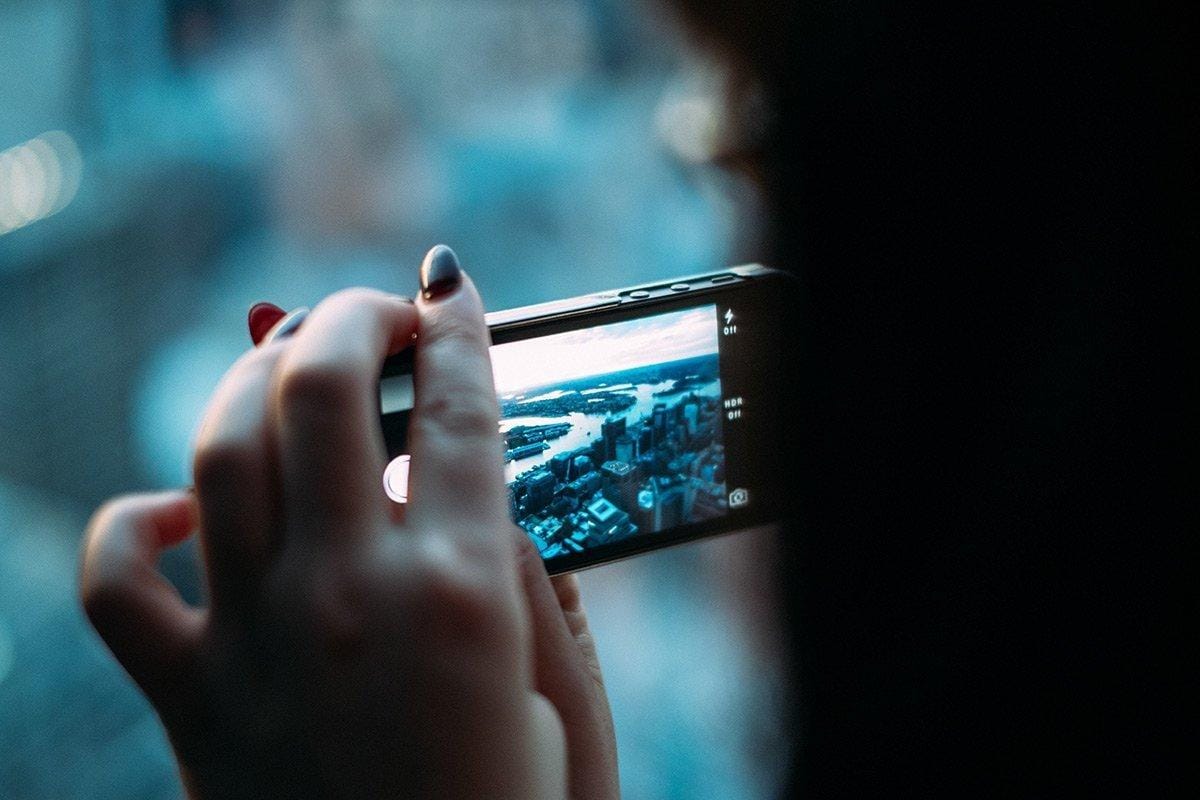Easy iPhone Photography Tutorial
[vc_row][vc_column][vc_custom_heading text=”Welcome to our iPhone photography tutorial!” font_container=”tag:h1|text_align:left”][/vc_column][/vc_row][vc_row][vc_column][vc_column_text]One of the usual iPhone photography misconceptions is that the iPhone cannot be used to capture serious enough photography.
You need to try and see the final result before you press the button to capture your photograph. Anyone can take a photograph, but capturing a photo that is worth showing is a skill that can be learnt and practised. The equipment matters, but what matters most is the vision of the person taking the photograph.[/vc_column_text][/vc_column][/vc_row][vc_row][vc_column][vc_custom_heading text=”1. iPhone photography”][/vc_column][/vc_row][vc_row][vc_column][vc_column_text]One of the most important things to do before you start iPhone photography (and this works with Android too) is to wipe your phone’s camera lens first, this will prevent smudges of lights to appear on your photos, and will make sure your pictures are as clear as possible. It’s a very simple thing to do, but many people do not think about it.
Smartphone photography should be 10% about your equipment and 90% about yourself. We will try here to show you how to use your iPhone camera and edit images to make them better, and post better images to your friends and social media networks.
What we will learn:
– How to take great iPhone photography by using the rule of thirds and picture composition
– How to create depth in your photos
– How to optimise your iPhone camera settings for taking great photos
– How to use the light around you to light your subject[/vc_column_text][/vc_column][/vc_row][vc_row][vc_column][vc_custom_heading text=”2. Photography technique reminder”][/vc_column][/vc_row][vc_row][vc_column][vc_column_text]Photography has always been taught with basic techniques, and if you have picked up a camera in the past and been overshadowed by a family member, you may have heard them mention a few of those points. A few words that you will need to understand for the remainder of the course: Composition, Focus, Depth of Field, Exposure, Highlights, Shadows, Blur…
Composition
This one element could help make your photo taking technique so much better. Shot composition helps guide the viewer’s eye through the image quickly. Imagine taking pictures of a large avenue in a big city like NYC. If you position yourself so that you stand in the middle of the road and the shot is framed by skyscrapers either side. That image will be pleasant to the eye. There are four different shot composition types.
Perspective
Low angle (shot from a child’s height and make your surroundings look bigger), high angle (shot from a higher point to make pictures look more dramatic, increase the depth and make subject look smaller), lateral movement (shoot from left to right facing the subject) and first-person Point Of View (include the viewer in the picture by shooting feet of hands or the person holding your hands in front of you).[/vc_column_text][/vc_column][/vc_row][vc_row][vc_column][vc_column_text] [/vc_column_text][/vc_column][/vc_row][vc_row][vc_column][vc_column_text]Vantage Point
[/vc_column_text][/vc_column][/vc_row][vc_row][vc_column][vc_column_text]Vantage Point
The vantage point is a point of focus created by leading lines (starting from the outside of the frame and travelling inwards to a single point). Find a shooting point that will make the viewer look in a particular direction. Lines can be found in almost anything around you: buildings, trees, streets, mountains, etc. But think outside of the box as they are not always obvious. It could be a green mountain range against a blue sky, a reflection in the water, a line of trees, inside a room, etc.[/vc_column_text][/vc_column][/vc_row][vc_row][vc_column][vc_column_text] [/vc_column_text][/vc_column][/vc_row][vc_row][vc_column][vc_column_text]Rule of Thirds
[/vc_column_text][/vc_column][/vc_row][vc_row][vc_column][vc_column_text]Rule of Thirds
The Rule of Thirds: As the name indicates, is exactly that. Imagine your image divided into three equal parts both vertically, and horizontally.
The idea of the Rule of Thirds is to help you compose images that are more interesting & appealing to the eye. It is a guideline that suggests we either break up major elements of our images so that they are positioned equally within these segments, or we position the main subject of the image at the intersections of these lines. If you are new to photography, you will want to avoid putting your subject at the centre of the image. Use the rule of thirds to make you discover new ideas for your own compositions, and make the eye of the viewer wander.[/vc_column_text][/vc_column][/vc_row][vc_row][vc_column][vc_column_text] [/vc_column_text][/vc_column][/vc_row][vc_row][vc_column][vc_column_text]Dead space
[/vc_column_text][/vc_column][/vc_row][vc_row][vc_column][vc_column_text]Dead space
Dead space is the space behind a subject that is not considered distracting to the eye. Use it to highlight the main subject. I often photograph people in front of a simple wall of bricks, putting the subject in the bottom right corner and capturing the whole wall for effect. Try it for yourself.[/vc_column_text][/vc_column][/vc_row][vc_row][vc_column][vc_column_text] [/vc_column_text][/vc_column][/vc_row][vc_row][vc_column][vc_custom_heading text=”3. Pre-shooting setup”][/vc_column][/vc_row][vc_row][vc_column][vc_column_text]Most settings for your iPhone camera can be found here: Settings > Camera
[/vc_column_text][/vc_column][/vc_row][vc_row][vc_column][vc_custom_heading text=”3. Pre-shooting setup”][/vc_column][/vc_row][vc_row][vc_column][vc_column_text]Most settings for your iPhone camera can be found here: Settings > Camera
Turn off Live Photo. I’m using an iPhone 7 myself, which has Live Photo, and later iPhones use Live Photo, which is a feature that records a movie before and after your still photo and then let you choose the exact moment you want to use. I find it distracting.
Turn on HDR (High Dynamic Range). This feature will make your phone take a succession of three images, one neutral, one with strong highlights and one with strong shadows, and combine them into one.
Turn on the grid. It will help you with the Rule of Thirds, and the composition. But also to ensure the horizon is level.
Digital zoom. Never use the digital zoom by bringing the background closer with a swipe of two fingers across the screen, it will reduce the resolution tremendously, and hence your picture quality. Just get closer to the subject if you need a better shot.
Focus. Even though iPhones and most smartphones cameras will use autofocus, you can tap on the screen to focus on what you want to capture, either your subject or the background.
Exposure control. After you have tapped the screen to focus on a particular area of it, you can slide your finger up and down to change the exposure.
Focus lock. Because the focus and exposure are not remaining locked forever, you can use the Focus Lock feature by tapping to focus and leaving your finger in place to lock the focus and the exposure. A yellow AF/AE Lock message will appear.[/vc_column_text][/vc_column][/vc_row][vc_row][vc_column][vc_custom_heading text=”4. What is photography anyway?”][/vc_column][/vc_row][vc_row][vc_column][vc_column_text]It’s all about the LIGHT! In a film or digital camera, ideally, the smaller the aperture, the fastest the shutter speed and the lowest the ISO but it does not always work that way.

However, when using your smartphone, the surrounding light can dramatically affect your images. The exposure is the difference between the lightness and darkness in an image. Shooting towards the light, or shooting with the light can have a totally different effect on the final image.
The best time to take photos is in the golden hour. One hour before sunrise and one hour before sunset, because the light is at its softest.[/vc_column_text][/vc_column][/vc_row][vc_row][vc_column][vc_custom_heading text=”5. Be adventurous!”][/vc_column][/vc_row][vc_row][vc_column][vc_column_text]Plan your shoots, choose your vantage point carefully, think out of the box, be different, but BE SAFE.
Lay on the ground for your perfect low-angle shots, wake up early to get that golden hour before anyone else, and stand in the middle of the road (while being safe). Try weird angles, be creative. And figure out what inspires you!
DO NOT TAKE PICTURES OF DUCKS.
And the most important thing of all: Memorise the rules and BREAK THEM! Practice will help you get better. Keep shooting and learn how to edit your pictures better from your phone. And when you’re not shooting, study your favourite photographer’s photos and look for all the things we discussed in them. Vantage point, leading lines, use of light… Once you start recognising the patterns, start to add your own style, by breaking the rules![/vc_column_text][/vc_column][/vc_row]



